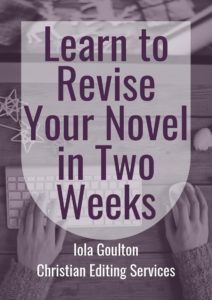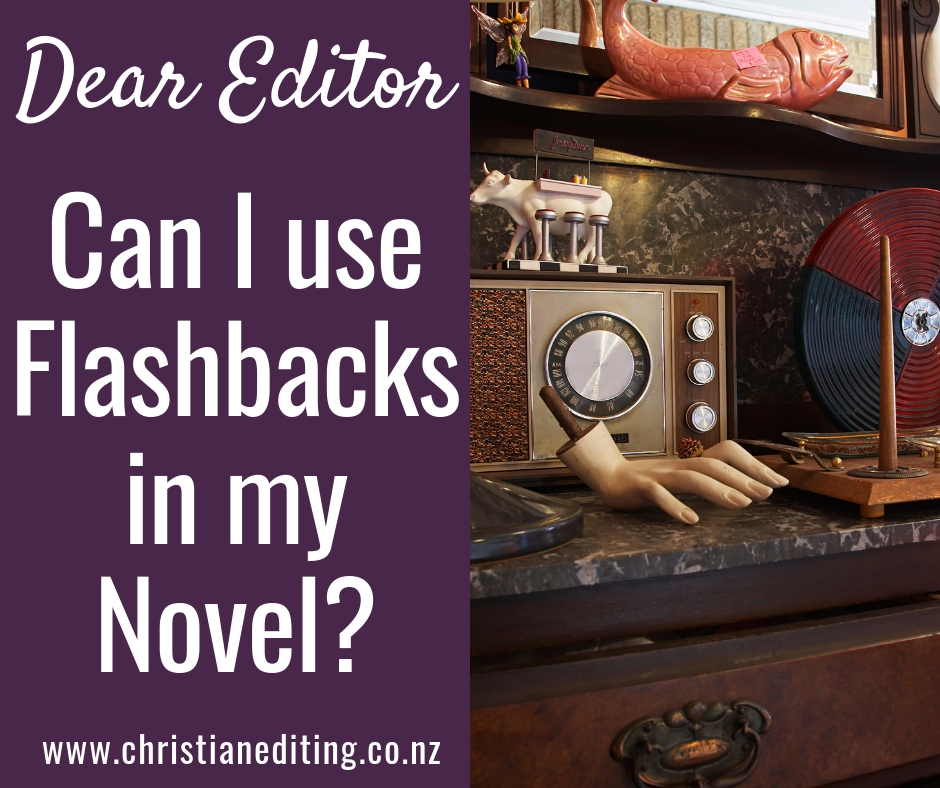One common mistake new fiction writers make is not structuring their scenes for maximum impact. Many don’t even realise there is a correct or best way to structure a scene. This often leads to “empty” scenes—scenes where things happen, but where it’s not clear how they are related to the overall plot.
(Sometimes, poor scene structure is a signal there is no overall plot, but that’s a different issue.)
Writing a Great Scene
Les Standiford says:
A good scene will enrich character, provide necessary information to the audience, and move the plot forward.
A good scene will do all three. An average scene might achieve two out of the three objectives.
What are the essentials of a good scene, and how do your scenes rate? 14 Questions to Ask when You're Revising a Scene #WriteTip #AmEditing Share on XBut a lot of scenes seem to serve no other function than share a small snippet of important information to the reader. If so, do we need that scene? Or would it be a stronger novel if we moved that snippet of necessary information into another scene—one that does enrich character and move the plot forward?
1. Does Your Scene Follow the GCD Formula?
In order to move the story forward, a scene must have:
A goal.
The point of view character must want something. Ideally, this goal will related to the character’s overall internal or external goal. This character goal gives the scene purpose.
Conflict.
Something the point of view character must overcome in order to achieve their goal. This conflict will typically come from the other character in the scene.
Disaster.
Something which prevents the point of view character from achieving their goal.
This can be summarised in a single sentence:
[Character] wants [Goal] but [Conflict] leads to [Disaster]
The Goal-Disaster-Conflict scene structure originated with Dwight L Swain in Techniques of the Selling Writer, and has been discussed in various books and blog posts. Randy Ingermanson has an excellent blog post on the subject, Writing the Perfect Scene, and a book, How to Write a Dynamite Scene using the Snowflake Method (which is on my never-ending to-read pile).
Do your scenes follow the Goal-Conflict-Disaster formula? And what does that even mean? 14 Questions to Ask When You're Revising A Scene #WritersLife #EditTips Share on X2. Is Your Scene Followed by a Sequel?
But that’s not all. A scene is usually followed by a sequel. Where scenes are about the point of view character’s external actions in pursuit of a visible goal, the sequel is about the character’s internal reaction to the conflict and disaster.
The sequel also has three parts:
Reaction.
The character’s initial (and often involuntary) reaction to the Disaster.
Dilemma.
The character is now faced with a problem, a dilemma, two options they have to choose between.
Decision.
The character’s solution (right or wrong) to the Dilemma. This will form the basis for the character’s goal in the next scene.
The decision plunges the characters into the next scene, and the next.
This pattern of goal-conflict-disaster-reaction keeps the plot moving forward towards the overall character goal, and to the answer to their story question.
Not all scenes are followed by sequels. Sometimes, the story moves straight into the next scene. If so, there should be a change in the time, place, or point of view character. The change in time or place might be signalled through a simple transition at the beginning of the next scene or chapter, e.g.
- The next morning …
- Back at the ranch …
Or the next scene could take place in the same time and place, but with a change in the point of view character. This change is signalled by a scene break (usually *** or similar) or chapter break, and by identifying the new point of view character in the first sentence of the new scene.
Do I Have to Follow this Structure?
For most scenes, yes. Your reader (consciously or subconsciously) expects the scenes to follow this structure, especially in genre fiction. But you don’t have to follow this structure for every scene in your novel.
This is (yet another) example of knowing the rules so you know how to break them. If you know how to structure a scene and most of your scenes follow the expected structure, then your reader will react when one of your scenes follows a different structure—and you can manage that reaction to best suit your story.
If you don’t know the rules, then your scenes are likely to leave your readers feeling dissatisfied, as though something is missing.
Scene structure isn’t the only thing readers expect.
They also expect to know what is happening in the scene, which means anchoring them in the scene as quickly as possible—in the first line, the first sentence, or the first paragraph. If the reader isn’t anchored in the scene, they’re likely to start skimming (I know I do). And we don’t want the reader to skim, because skimming is an invitation to close the novel.
So the first sentence of a scene or chapter is important. It’s the one time you can tell rather than show. Sure, showing is better than telling, but telling is better than obscuring the necessary information.
What Do Readers Need to Know?
You need to answer four questions as quickly as possibly, ideally in the opening sentence of each scene:
3. Is the identity of the point of view character clear from the first sentence?
The reader expects the first-named character to be the point of view character. I suspect this is why some writing instructors recommend not starting with dialogue—because it can make it difficult to identify the point of view character.
“Catherine, would you like a coffee?” Iola indicated the coffee jar. It was almost empty, but there was enough for two more.
Who is the point of view character—is it the speaker, or the character being spoken to? The “rules” would say Catherine was the point of view character, as that’s the first name in the scene. But the action beat and internal monologue imply Iola is the point of view character.
4. Is the location clear?
Readers want to know where the scene is set, especially if the scene location has moved since the last scene. If the location isn’t clear, the reader will assume the location is the same as in the last scene … which can get confusing if it isn’t.
5. Is the time clear?
Readers expect the scene to take place immediately after the conclusion of the previous scene. If this isn’t the case, the author needs to indicate when—perhaps through the transition (e.g. the next morning) or perhaps through a time indicator at the beginning of the chapter (e.g. Christmas Day, 1945).
And remember: always move forward in time. Flashbacks (whether in scenes or in interior monologue) can be confusing for the reader, and can affect the pace by messing with the forward motion of the story. The exception to this would be a dual or multiple timeline story—but then it’s even more important to ensure your reader knows when the scene is taking place.
Are you anchoring your reader in the scene? If you're not, you encourage readers to skim. What do they need to know? #WritingCommunity #Writers Share on XMost multiple timeline stories move each timeline forward in time. Occasionally, a dual timeline story might move the present story forward in time, but the past story is a series of non-linear flashbacks, each inspired by some present clue. These may jump around in time.
6. Does the scene start with a change in time, place, or viewpoint character?
Readers subconsciously expect a scene or chapter break to mean there is a change in time, place, or point of view character. If there isn’t, it feels like the scene or chapter break has been inserted as a cliffhanger ending, perhaps to inject some tension into the plot … which is a subconscious tell that there is no conflict in the scene, because it’s not following the Goal-Conflict-Disaster formula.
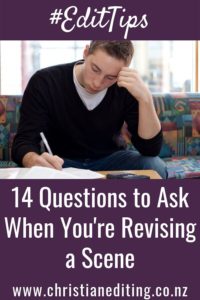
More on Scene Structure
There are two more questions to ask when it comes to how best to start and end a scene:
7. Does your Scene Start with a Hook?
You need to hook your readers into the scene—show the goal and the conflict as quiclky as possible, so your reader is never tempted to put the book down.
I suspect this is also why paper books traditionally start each chapter on the right-hand page. It’s so the reader promises themself “just one more chapter”, but gets to the end of the chapter at the top of the left-hand page, then can’t help reading the first line of the next chapter … then can’t stop reading. Hello, 3am. That’s a hook.
8. Does your Scene Start In Media Res?
In media res is Latin for “in the middle of the thing”. Don’t start a scene with backstory. Start with action—with what is happening now, not why it is happening. Start each scene and each chapter (and each novel) as late as possible.
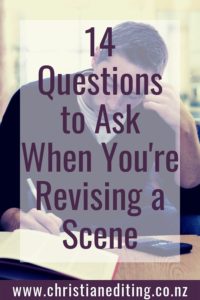
9. Are Your Sequels Short?
Some authors like to have their characters endlessly pondering their reaction and dilemma. The problem with this is that while Scene is showing, Sequel is telling. Yes, we need the sequel. Why? Because we need to understand the point of view character’s emotional reaction to the Scene. But that means a few sentences or a paragraph, not paragraphs or pages of interior monologue.
10. Do Your Sequels go on Too Long?
This is related to keeping the sequels short. Just as you start each scene as late as possible, you need to finish early. End on a powerful word or phrase, one that the reader will remember … a hook that will keep them reading.
Too often, I find the most powerful sentence is two or three sentences before the end, which dilutes the power.
Instead, finish early.
The Overall Scene
So your scene has a goal, conflict, and a disaster. It starts in media res, with a compelling hook. It’s followed by a short sequel. Here are four more questions to ask yourself about the overall scene:
11. Can you summarise the scene in a character-goal-conflict-disaster sentence?
If so, great. That probably means you’ve got a scene that does the job: enriches character, provides necessary information, and moves the plot forward.
If not, why not? What’s missing? How can you revise your sentence—and your scene—to include all the necessary components?
12. Is the viewpoint character the character most affected by the events in the scene?
The point of view character should always be the character with the most to lose in any given scene. As a bonus, the goal-conflict-disaster structure pretty much guarantees the character will lose (otherwise, where’s the disaster?).
So if your scene isn’t working, try writing it from a different point of view. It could be that the other character has more to lose.
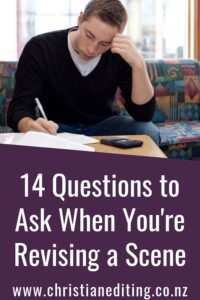
13. Is the scene shown in terms of action?
This comes back to showing, not telling. If you’re showing, then you’re probably showing character actions and their reactions (e.g. through action beats and body language). If you’re telling … well, you’re telling. And you need to revise the scene to show what’s happening. Ask yourself: what’s the visual?
14. Does the scene move the plot forward, deepen characterisation, or provide necessary information?
It’s possibly—unlikely, but possible—that a scene has a goal, conflict, and a disaster, but doesn’t actually move the plot forward. If so, you need to ask yourself why the scene deserves a place in your novel:
- The scene is emotional respite or comic relief after a series of high-action or high-emotion scenes. If so, fine. You can’t have high-action or high-emotion scenes all the time—they exhaust the reader, which encourages them to put the novel down. The occasional lightweight scene can break the tension and keep the reader engaged.
- The scene is setting up the main character/s or main conflict in the sequel. If so, fine. One of the benefits of writing a series is sell-through, and you’re going to improve sell-through if you can pre-sell the next novel by engaging readers in this novel.
- The scene is about characters in a previous novel. Again, this can work. Most series—especially longer series—have an anchor character or anchor couple, and readers want to “see” that couple again. So a wedding or reunion scene might not move the plot of this novel forward, but it provides readers with the opportunity to catch up with their favourite characters from previous novels in the series. This helps keep them engaged in this novel, and in the series.


